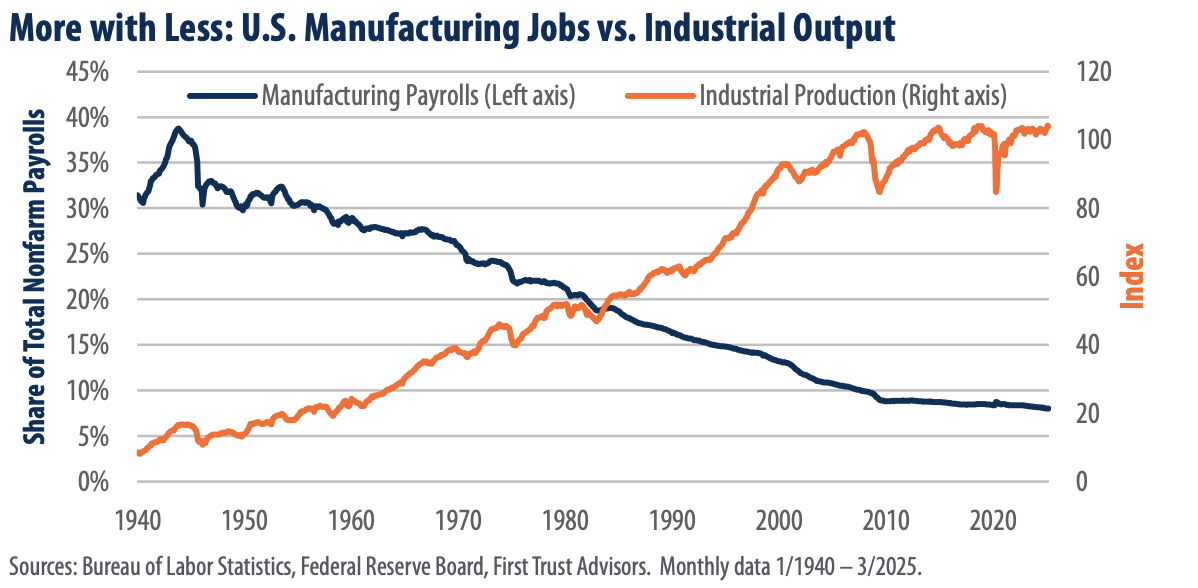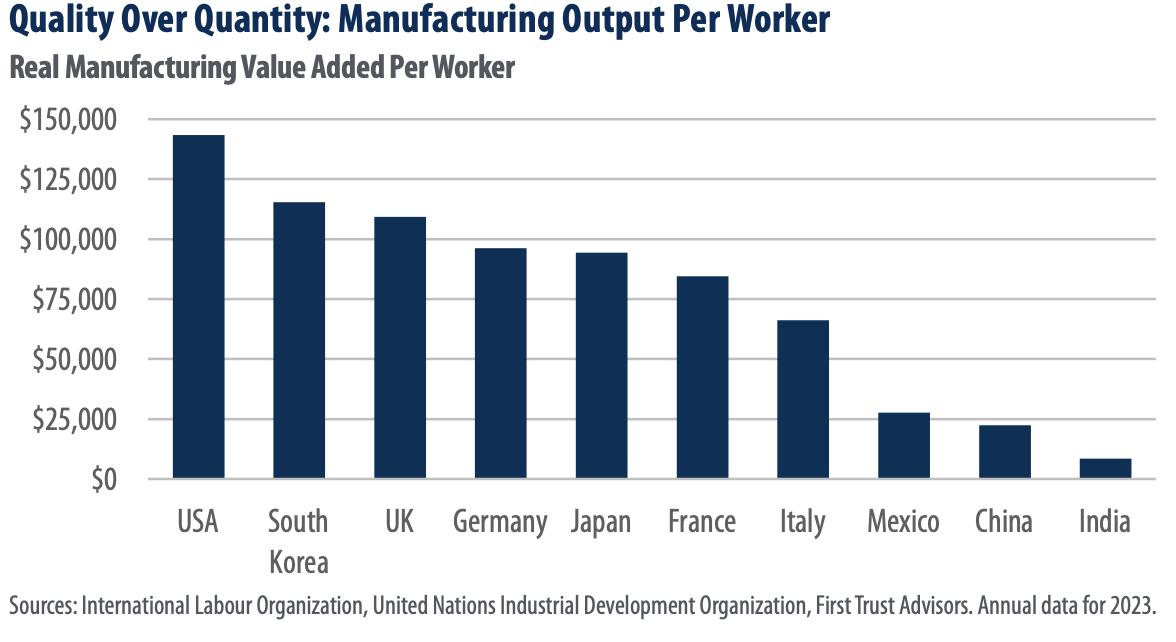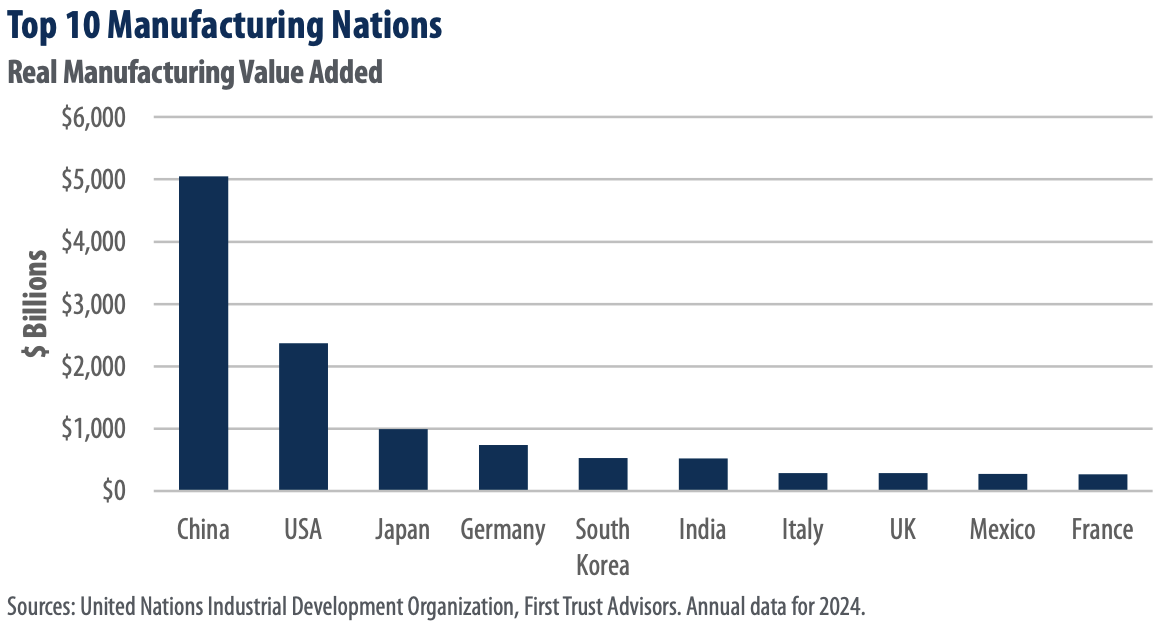The President’s chaotic, wing-it, play-it-by-ear tariff campaign has unclear aims–eliminate the trade deficit, bring manufacturing back to the US, raise revenue–which are generally inconsistent. Thanks I suspect largely to Secretary Bessent, we appear to heading to a somewhat rational conclusion. Of all the goals the one that makes the least sense is to try to force manufacturing back to the US. Let us first distinguish certain national security items–semiconductor chips, refining of critical minerals, pharmaceuticals, actual weapons. Those should be manufactured in the US or in a clearly friendly ally. Trying to encourage widespread manufacturing of everything else in the US makes no sense–it raises prices and mis-allocates capital that otherwise would flow to higher value industry sectors, in particular tech and finance, where the US dominates.
Among the challenges facing re-shoring of manufacturing are lack of labor and labor costs, lack of engineering, process and other expertise, lack of tooling companies, and bad permitting and regulatory environments. Other than that it is really easy and cheap to start a manufacturing business in the US. These charts are helpful to understand the truth about manufacturing. The first shows that while manufacturing jobs have indeed declined significantly (and they have been replaced by much higher paying jobs in other industries) our industrial output has increased greatly. This is called productivity and it is a wonderful thing. It is the key to increases in the standard of living. If you produce more of any good or service using the same amount of labor, capital or any other input, you can lower its relative price and consumers benefit, having more money to spend on other items.
 Out productivity advantage is further highlighted in the next chart. Here you can see that the US actually leads the world in value of manufacturing output per worker. That is because our manufacturing is focused on high-value products, products in which labor is a relatively small portion of cost, products whose manufacture we have highly automated.
Out productivity advantage is further highlighted in the next chart. Here you can see that the US actually leads the world in value of manufacturing output per worker. That is because our manufacturing is focused on high-value products, products in which labor is a relatively small portion of cost, products whose manufacture we have highly automated.
 The last chart shows that in regard to manufacturing, the US actually is doing pretty well in adding real value, with only China outperforming us. Reports of our decline, as in the first and second chart, are greatly exaggerated.
The last chart shows that in regard to manufacturing, the US actually is doing pretty well in adding real value, with only China outperforming us. Reports of our decline, as in the first and second chart, are greatly exaggerated.
 The bottom line is that manufacturing is actually doing just fine in the US, focussed where it should be and artificial government efforts to boost it are just interfering with the better wisdom of the market as a whole.
The bottom line is that manufacturing is actually doing just fine in the US, focussed where it should be and artificial government efforts to boost it are just interfering with the better wisdom of the market as a whole.


I agree that manufacturing jobs is not the right measure and that we should not much care if stuff like tee shirts are not made here. But I don’t think the situation is as rosy as you say. The index in the first graph shows that growth in manufacturing slowed around the year 2000 and has stagnated since 2008.
I think the right numbers to judge the impact of imports on domestic manufacturing would be the fraction of goods consumed that are produced domestically. My guess is that fraction has been dropping, at least in this century.